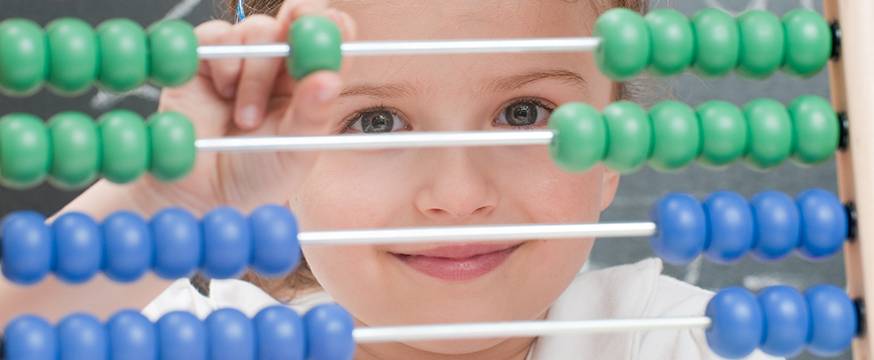
Influences on children’s numeracy skills
Research 30 May 2013 4 minute readJohn Ainley reports on an analysis of the impact of background characteristics on young children's numeracy skills.
Influences on children's numeracy skills
Young people's numeracy skills are a vital foundation for their subsequent achievements through school and into further education, training and work.
Children's numeracy achievement is affected by gender, socioeconomic characteristics and family characteristics, according to the latest results from Growing up in Australia: Longitudinal Study of Australian Children (LSAC).
The study examines the numeracy skills demonstrated by children at different ages, and whether numeracy skills vary for children from different backgrounds. Information about children's numeracy skills was obtained from teacher ratings and results from the National Assessment Program – Literacy and Numeracy (NAPLAN). Teacher ratings were collected using the LSAC teacher questionnaire, in which teachers judged the proficiency of the child's numeracy skills in relation to other children the same age.
Girls tended to have significantly more developed numeracy skills than boys. As the children grew older, boys had slightly higher numeracy scores than girls, although the difference was not statistically significant.
Family characteristics
Children from families with a lower socioeconomic position had significantly lower scores than children from higher socioeconomic backgrounds. This difference remained at different ages and across different numeracy measures.
Based on teacher ratings, children with working mothers scored higher than children with non-working mothers. The difference was only statistically significant between children whose mothers worked zero hours and those who worked fewer than 35 hours per week. However, analyses of NAPLAN results did not reveal any significant differences in numeracy achievement according to mothers' working hours.
A relationship between other family characteristics and numeracy achievement was also found. Children from lone-mother families had significantly lower numeracy scores for every numeracy measure, at all ages, than those from two-parent families.
Children with three or more siblings had significantly lower numeracy scores compared with children who had only one or two siblings. It is possible that these associations could reflect other influences, such as that of lower socioeconomic position, but this would require further analysis to explore.
An English speaking or non-English speaking background was not associated with children's level of numeracy achievement.
What are young children's numeracy skills like?
Overall, children had well-developed numeracy skills. At 4–5 years old, most children were able to recognise numbers, count objects and count to 20, and classify and sort objects. At this age, one in three children were not able to do simple addition.
At 6–7 years old, more than 70 per cent of children were able to continue a pattern, understand place value, manipulate whole numbers, use graphs, make reasonable estimates and use different mathematical strategies. The least developed skills at this age were calculating change using different types of coins and measuring to the whole number using common instruments.
At 8–9 years old, most children were able to create and extend a pattern using multiple rules, manipulate different shapes, use measurement tools accurately, check their answers and organise data into graphs. At this age, the most difficult skills to develop were manipulation with fractions and division.
The report's findings that children from lower socioeconomic backgrounds, and those living in lone-mother families or families with three or more siblings tended to have lower numeracy scores provide support for policies that aim to improve opportunities for children from disadvantaged backgrounds.
Read the full report:
The chapter on Children's numeracy skills, by Galina Daraganova from the Australian Institute of Family Studies and ACER Principal Research Fellow John Ainley, is available in the Longitudinal Study of Australian Children Annual Statistical Report 2011.
